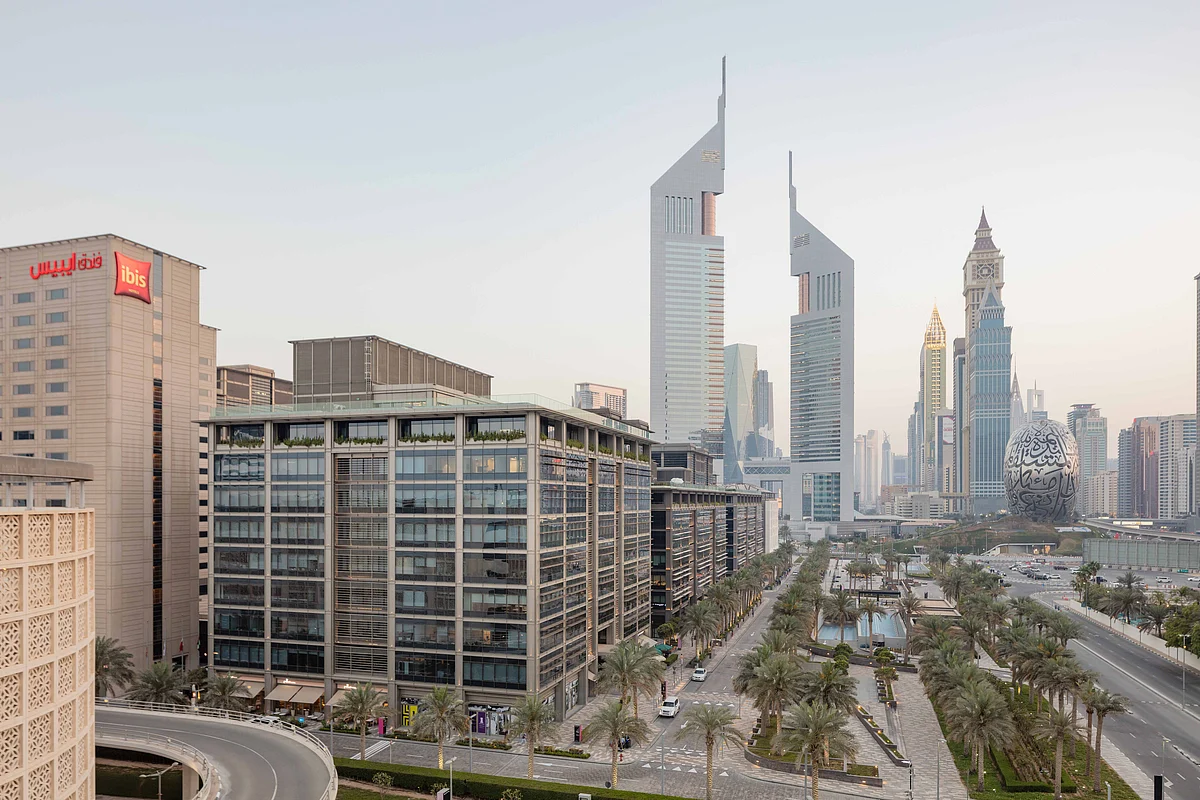Dubai Office Market Positioned For Continued Strength
The Dubai office market is positioned for continued strength in the medium term, supported by economic diversification, regulatory transparency, and business-friendly policies, experts say.
However, going forward, price sustainability will hinge on supply pipeline, occupancy absorption, and macroeconomic conditions. Strategic development of next-generation office space will be key to meeting demand and maintaining growth momentum, they stress.
Recommended For YouDubai's office market has recorded a sharp and sustained increase in capital values, with average prices rising from Dh768 per square foot in 2021 to Dh1,999 per square foot in 2025, marking a 160 per cent growth over the first half of the last four years.
This growth accelerated notably from 2023 onward, driven by increased demand for institutional-grade office assets, rising occupancy in central business zones, and a recalibration of workspace strategies after the Covid-19 pandemic.
Quarterly trends show strong consistency, with both Q1 and Q2 2025 prices exceeding Dh1,950 per square foot, indicating sustained momentum and deepening liquidity in the commercial sector, a report from Driven Properties and Forbes showed.
The rising occupancy trend, combined with near-saturation in free zones, highlights a robust and maturing office market in Dubai. This dynamic is not only pushing rents and capital values higher, but also reinforcing the need for new, high-quality developments to meet evolving tenant expectations in both regulated and non-regulated zones.
A significant shift has occurred in recent quarters with global institutional investors, REITs, and private equity players entering Dubai's office space market.
Landmark deals in areas like DIFC, Business Bay, and Downtown have raised investor confidence and set new pricing benchmarks.
This influx of capital has intensified the demand for Grade A buildings, particularly those offering ESG compliance, modern amenities, and free zone licensing features increasingly prioritized by multinational tenants.
As supply remains constrained in core business districts, office values have accelerated, reflecting strong investor demand and heightened competition for high-quality commercial assets.
Strong upward momentum in core market
Occupancy rates have steadily improved from 74.2 per cent in H1 2021 to an estimated 91.0 per cent in H1 2025, reflecting a 23 per cent increase in the first half over the period, . This growth signals a tightening commercial office market, underpinned by sustained tenant demand, limited new supply, and the return of corporate leasing activity across key non-free zone districts.
The steady year-on-year rise also reflects healthy absorption, especially of Grade A and well-located assets, as companies recalibrate their space needs post-Covid.
Free zone performance even stronger
Notably, the figures presented exclude free zone districts such as DIFC, DWTC, and Dubai Internet City, where occupancy rates consistently exceed 95 per cent, with some buildings reportedly operating at or near full capacity.
These zones benefit from regulatory advantages, sector clustering (e.g., finance, tech), and modern Grade A infrastructure, making them the top choice for international firms and institutional occupiers.
When free zones are factored in, the true citywide occupancy average would be even higher.
A notable spike in upcoming supply is expected between 2026 (136,169 units) and 2027 (122,862 units), compared to 60,203 in 2025, before tapering off significantly to just 8,122 units by 2030. This reflects a wave of projects launched during the post-Covid recovery cycle, many of which are expected to reach completion over the next 2–3 years.
Fitch Ratings has projected a potential 10–15 per cent price correction in 2026, citing the sharp increase in handovers as a source of oversupply risk. However, the report believes that this risk may be overstated, for key reasons:
>> Surging population growth, fuelled by rising expatriate inflows, long-term visa reforms, and Dubai's positioning as a global lifestyle destination.
>> Delayed handovers and phased project deliveries, which typically stretch actual supply absorption beyond the headline launch year.
>> Increased labour force participation, especially in white-collar sectors like finance, tech, and professional services, which translates into stronger housing demand.
>> Supportive macroeconomic fundamentals, such as GDP growth, employment recovery, and continued business formation, which underpin end-user and investor confidence.

Legal Disclaimer:
MENAFN provides the
information “as is” without warranty of any kind. We do not accept
any responsibility or liability for the accuracy, content, images,
videos, licenses, completeness, legality, or reliability of the information
contained in this article. If you have any complaints or copyright
issues related to this article, kindly contact the provider above.
Most popular stories
Market Research

- What Does The Europe Cryptocurrency Market Report Reveal For 2025?
- United States Kosher Food Market Long-Term Growth & Forecast Outlook 20252033
- Utila Triples Valuation In Six Months As Stablecoin Infrastructure Demand Triggers $22M Extension Round
- Meme Coin Little Pepe Raises Above $24M In Presale With Over 39,000 Holders
- FBS Analysis Highlights How Political Shifts Are Redefining The Next Altcoin Rally
- 1Inch Becomes First Swap Provider Relaunched On OKX Wallet






















Comments
No comment